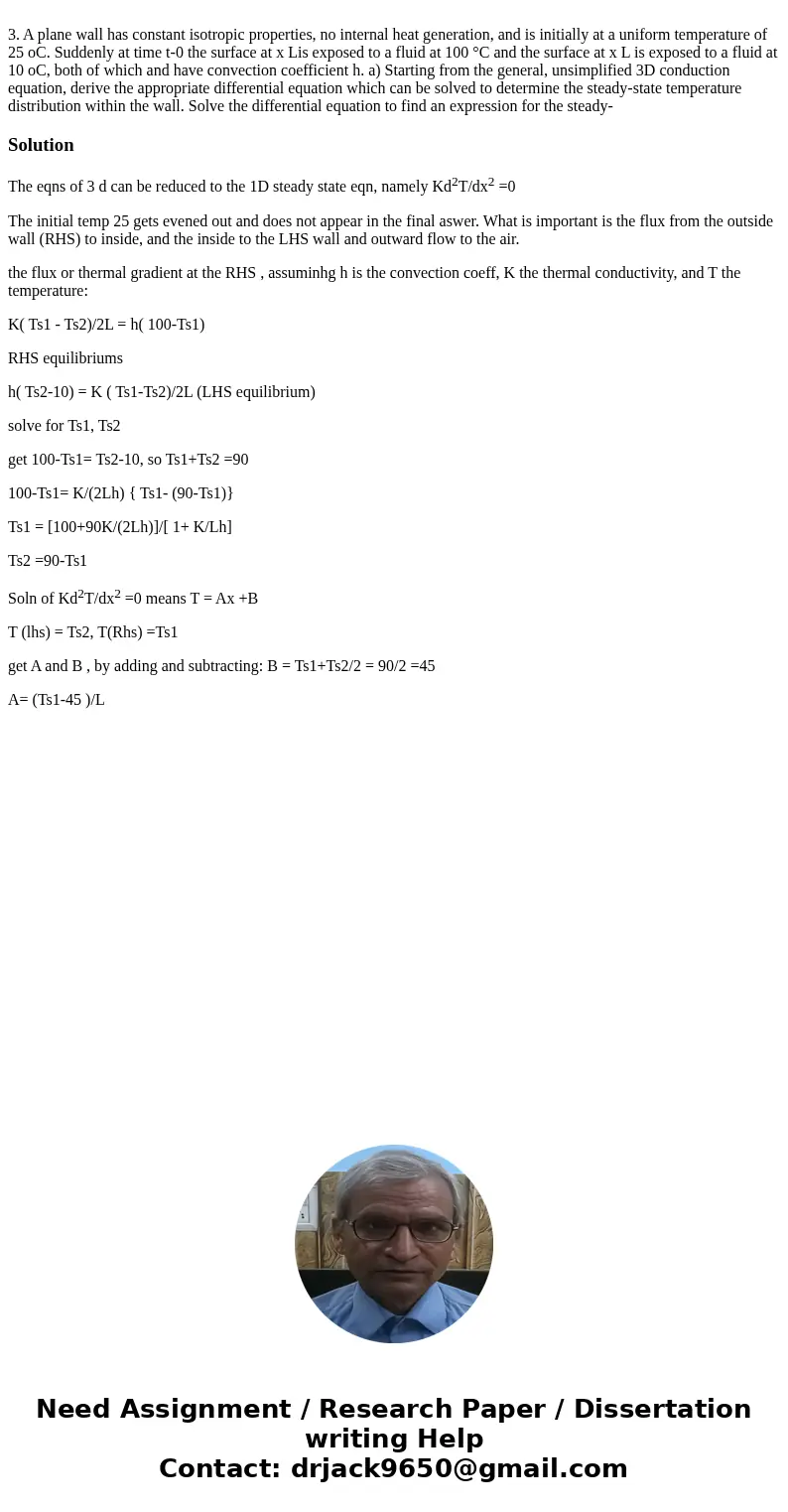3 A plane wall has constant isotropic properties no internal
Solution
The eqns of 3 d can be reduced to the 1D steady state eqn, namely Kd2T/dx2 =0
The initial temp 25 gets evened out and does not appear in the final aswer. What is important is the flux from the outside wall (RHS) to inside, and the inside to the LHS wall and outward flow to the air.
the flux or thermal gradient at the RHS , assuminhg h is the convection coeff, K the thermal conductivity, and T the temperature:
K( Ts1 - Ts2)/2L = h( 100-Ts1)
RHS equilibriums
h( Ts2-10) = K ( Ts1-Ts2)/2L (LHS equilibrium)
solve for Ts1, Ts2
get 100-Ts1= Ts2-10, so Ts1+Ts2 =90
100-Ts1= K/(2Lh) { Ts1- (90-Ts1)}
Ts1 = [100+90K/(2Lh)]/[ 1+ K/Lh]
Ts2 =90-Ts1
Soln of Kd2T/dx2 =0 means T = Ax +B
T (lhs) = Ts2, T(Rhs) =Ts1
get A and B , by adding and subtracting: B = Ts1+Ts2/2 = 90/2 =45
A= (Ts1-45 )/L

 Homework Sourse
Homework Sourse